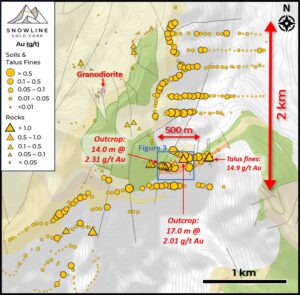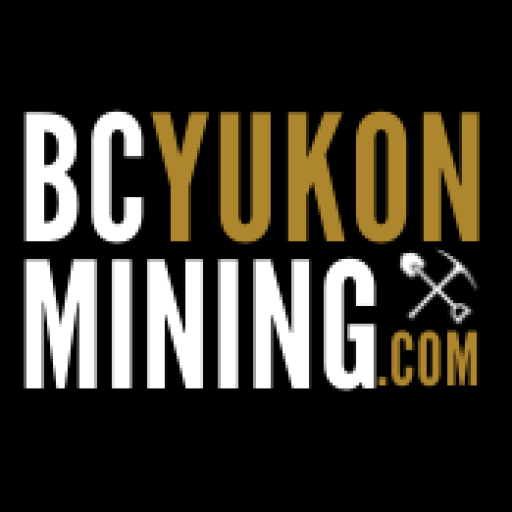Estes Park, Colorado, November 17, 2020 – Taranis Resources Inc. (“Taranis” or the “Company”) [TSX.V: TRO] is pleased to provide updates on its 100%-owned Thor project. During 2020 the Company completed geophysical work that was designed to gain further insight for targeting a large intrusive body that has been postulated to exist under the Thor deposit. Prior geophysical inversions of a ground magnetic survey have indicated the presence of a large (several km in strike length), concealed body of high magnetic susceptibility buried several hundred meters below the surface. This feature has been known for a considerable length of time, but before undertaking drilling to test the presence of an intrusive body at Thor, additional work was needed to prove the source of the magnetic anomaly was deep under the known Thor deposit.
Epithermal Deposit Model at Thor
Epithermal-type precious and base metal mineralization at Thor is found within a series of faults that strike northwest and dip moderately to the ENE. There is evidence that the deposit exhibits zonation where the lower parts of the deposit are enriched in base metals, and grade vertically into vuggy gold-rich rich zones. The Thor deposit overlies a large magnetic anomaly that is postulated to be a porphyry-type intrusive body that is not exposed at surface. There is direct evidence that the intrusive body is mineralized as described in drill hole Thor-193 (See Taranis News Release dated August 20, 2018). It is possible that the large intrusive body was the source of widespread mineralization at Thor, and metal-bearing hydrothermal fluids have moved up and along the Thor Fault Zone where they have been preferentially emplaced along the Sharon Creek/Broadview Formation Contact.
Surface, Downhole and Core Geophysical Exploration and The Buried Intrusive Body
Taranis utilized three types of magnetic surveys to gain full understanding of the prospective buried intrusive body. These involved magnetic surveys at surface, downhole magnetic surveys, and finally magnetic susceptibility measurements on the actual drill core. Data from each of these sources was compared in an area where there was a prominent magnetic anomaly found at surface, and within multiple drill holes.
The results showed that the source of the surface magnetic anomaly was able to be measured in the downhole surveys, but was not measurable in the actual drill core from each hole – meaning that the source of the magnetic anomaly lies under the drill holes. This was important because there was a possibility that the source of the magnetic anomaly at surface could have been related to the mineralization found in the drill holes, but this was not the case.
Conclusions
The source of the large, positive ground magnetic anomaly at Thor is probably related to a large, buried intrusive body that was originally observed in modeling inversions of the ground magnetic data. There are three pieces of evidence that indicate the presence of this buried intrusive target:
- Epithermal deposits are typically found on top of intrusive bodies, and these intrusive bodies are the source of mineralization for the actual deposits. Intense alteration of rocks occurs immediately around the intrusive body, and this is extensive at Thor.
- Various types of magnetic surveys that are commonly used to identify large magnetic intrusive bodies have indicated the presence of such a feature.
- Direct evidence of mineralized intrusive rocks found in drill holes (Thor-193) and in a separate area of Broadview Creek. These occurrences occur over the inverted magnetic body at the south end of the Thor deposit where Broadview Creek has eroded deeply into rocks that lie on top of the body.
Based on these results, Taranis now feels it is likely that the high-grade Thor deposit is underlain by a large intrusive body that could host substantial, widespread low-grade mineralization, and this target warrants testing with diamond drilling. Potential metals of interest would include those found in the epithermal part of the deposit including gold, silver, lead, zinc, copper, antimony, indium and tin. If this conceptual model is borne out with future exploration drilling, it would mimic other large deposits seen in other parts of the world that link high-grade epithermal deposits with underlying low-grade intrusive-hosted deposits.
Qualified Person
John Gardiner, P.Geo., is a qualified person as defined in National Instrument 43-101. He has reviewed and is responsible for the technical information in this news release.
About Taranis Resources Inc.
For additional information on Taranis or its 100%-owned Thor project in British Columbia, visit www.taranisresources.com









